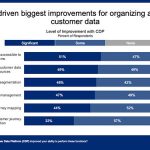Personalization is one area of optimization that’s continuously addressed on blogs or at conferences. Each year, marketers gather more data, and have more tools and opportunities to ensure their emails allow the subscriber to feel more connected to the brand. Some brands have been able to leverage the data and the tools to become more relevant to the subscriber, having done so with diligence, testing, resilience and taking risks.
However, many brands have overlooked a key component to relevancy bliss at some point in time: the pre-send experience. This refers to anything that could impact the email program before the email is sent to the subscriber.
It’s not about a beautiful piece of creative, captivating copy and irresistible calls to action with hyper-personalization sent at the right time to subscribers. The optimization of the pre-send experience is sometimes put last on the list of things to do because it’s not sexy, takes time and requires patience.
Inception and administration
There are two equally weighted areas of the pre-send experience that marketers need to focus on: inception and administration.
Inception is tied to what a person goes through to sign up for the email program on a site or on another channel. In many organizations, the website and UX are owned by different groups, which often means that the email department is left out of the optimization discussion even though the objective of list growth is technically shared.
For example, brands like to play hide and seek with the email sign up and place it toward the footer of the site in a small font, because the notion of making it more prominent is often frowned upon by designers. The idea of making a pop-up banner to capture email addresses is too intrusive to the experience. Yet if done right and tested, it can be a stable and sustainable source of email list growth.
A critical part of inception is the experience you provide on getting data, preferences or choices that people have around your email program. If you have 15 newsletters and capture 11 pieces of geographic and psychographic data points, is that too much for the subscriber to handle the first time they interact with your email program? While the goal is to provide choice, too much choice can overwhelm and turn people off.
As an email marketer for more than 21 years, I encourage clients to go through the sign-up experience at least twice a year with an unbiased group of people to see how easy or painful it was to get on the email list. As marketers, we understand our brand’s process on the site, but often overlook the things that could annoy or frustrate the typical site visitor who wants to sign up for your email program.
A great test to execute this is watching people navigate the front page and looking at the process they go through. After, you should ask the following questions:
- Did you find the process to sign up for email easy or challenging?
- Do you understand what our email program is about and what to expect?
- Do you feel special or do you feel like a number?
The goal is to create an experience your customer can benefit from, rather than what your marketing department wants.
Administration is the ongoing experience your subscriber has during specific points of their email lifecycle with your brand. These things include a preference or subscription centre, cadence or frequency caps, opt-out or opt-down options, and the use or misuse of the data you have on each one of them.
If you have data, use it. But use it sparingly as not to raise the red flag of creepiness.
For example, if you have invested resources and budget into a preference or subscription centre and only leverage or promote it for the inception experience, you could be missing out on critical lifecycle points from the subscriber because things change in their lives.
A preference or subscription centre shouldn’t just capture data points at one point in time and be promoted at the bottom of every email next to the unsubscribe link. It should be publicized at various time stages for each subscriber to update as their life and preference changes.
Finally, if you have data, use it. But use it sparingly as not to raise the red flag of creepiness. Today’s sensitivity of subscribers is at an all-time high and, as brands, you need to be a good steward of privacy.
The optimization of the pre-send experience should be an ongoing project for any organization. It’s time for email marketers to help influence and take ownership of things that have long been assigned to other departments. The email program has long influenced attribution, and marketers today need to un-silo themselves from single-channel expertise.
Feature Image Credit: iStock
By ANDREW KORDEK
Andrew Kordek is vp of customer engagement at iPost, an email marketing and automation platform.






